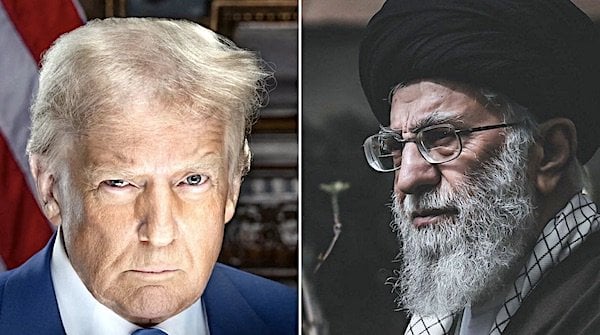The continued collapse of Tehran’s stock market indices this week, compounded by massive capital flight following the recent war, reflect deepening economic turmoil throughout Iran.
On Wednesday, July 2 alone, over 13,200 billion tomans were withdrawn from the Tehran Stock Exchange – a historic record. Reports had already surfaced of the regime’s desperate efforts to curb this exodus, including deliberate technical disruptions in multiple currency exchange offices as early as Monday.
A future clouded by uncertainty
Abbas Abdi – a former student leader involved in the 1979 U.S. Embassy takeover and ex-deputy head of the Iran-based Presidential Strategic Research Center – recently wrote:
“On the surface, administrative, production and service sectors seem to have returned to normal after the war. But one thing has fundamentally changed: our perception of the future.”
That perception is now defined by uncertainty and fear. Growing anxiety within the regime’s inner circles reflects a deep concern that collapse is not only possible, but imminent. Many regime officials, Islamic Revolutionary Guard Corps (IRGC) commanders and business elites have already secured escape plans abroad – particularly in Canada and Latin America – and arranged foreign citizenship for their children, the so-called Aghazadeh (“children of the elite”), as a safeguard should the regime fall.
A televised appearance, not a display of strength
After a full week of silence following the 12-day war between Israel and the Islamic Republic, the regime’s Supreme Leader Ali Khamenei finally appeared on state television on Thursday, June 26, via a pre-recorded video from an undisclosed location.
With a trembling and hoarse voice, he claimed that Iran had triumphed over Israel and the U.S., forcing its enemies “to their knees.”
But this message wasn’t aimed at foreign adversaries. Its real audience was the anxious and demoralized loyalists within the regime – those who cling to power through nepotism, privilege and amassed wealth in a nation stricken by poverty. His aim was to reassure them at a time when even seminary students and religious circles are no longer inspired by his long-standing slogan of “No war, no negotiation.”
Once portrayed as a formidable military front, the “Axis of Resistance” today resembles little more than a scattered choir of retired ideologues – in Beirut, Baghdad and Sanaa.
The ghost of 1981 returns
What the regime fears most now – especially Khamenei – is the outbreak of a widespread popular uprising, reminiscent of the protests violently crushed in 2022. The underlying causes of public outrage remain unresolved, and conditions have only worsened. Resistance Units have begun targeting government offices and security centers across the country on an almost daily basis.
A filmmaker close to the regime’s intelligence services stated on state TV on June 25:
“We are in a situation similar to 1981 – arguably the darkest year of the revolution. On June 20, the People’s Mojahedin launched an armed uprising. Even the director of Evin Prison wasn’t safe inside his own facility. A hundred thousand armed members took to the streets of Tehran, Isfahan, Shiraz … Even the IRGC intelligence chief’s office was attacked.”
On that day, June 20, 1981, Ayatollah Khomeini ordered the massacre of peaceful protesters who had rallied at the call for freedom sounded by the People’s Mojahedin Organization of Iran, or MEK. That massacre marked the beginning of a resistance that still endures.
Hundreds were killed, thousands arrested, and mass executions began.
Today, once again checkpoints have been installed across Tehran and other cities. The police have announced they will remain “until further notice.” A wide-scale wave of arrests has begun. According to Fars News Agency, affiliated with the IRGC, 700 individuals have been detained for alleged involvement in a “spy network.” The number of arrested in Tehran remains undisclosed. In Kermanshah Province, 115 were arrested – most accused not of espionage, but of “anti-regime propaganda.” In Fars, 53 were arrested for “disturbing public order,” and cyber police in Isfahan reported 60 others identified for similar offenses.
Meanwhile, executions have surged at an alarming rate. In June alone, 140 were reported, nine prisoners executed on charges of “espionage for Israel” – charges widely seen as fabricated.
The nuclear project: Not development, but survival
Today, neither mass repression, nor the regime’s foreign militias and proxies, nor even its crippled nuclear program can save it.
While the nuclear program has brought only ruin to Iran and its people, for Ali Khamenei it has long been a pillar of regime survival. He has viewed it as a means to exert regional influence, gain leverage in international crises and strengthen the IRGC – the main force behind domestic repression and foreign interventions – to suppress internal unrest and deter uprisings.
As the Iranian Resistance has long stated: “The collapse of the regime’s nuclear strategy will inevitably weaken this medieval dictatorship and throw its internal balance into chaos.”
For many analysts, that destabilization has now passed the point of no return, the hated theocratic regime in freefall – with no way back.
Click this link for the original source of this article.
Author: Hamid Enayat
This content is courtesy of, and owned and copyrighted by, https://www.wnd.com and its author. This content is made available by use of the public RSS feed offered by the host site and is used for educational purposes only. If you are the author or represent the host site and would like this content removed now and in the future, please contact USSANews.com using the email address in the Contact page found in the website menu.








